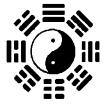|
Disclaimer: This unedited, rough draft material is a year-long project in response to our 2004 theme: pilgrimage. It is meant to be a dialogue between myself and my fellow Mammoths and any of you who happen along. It is intentionally not polished, nor is it finished. Charlie Buchman Ellis -------------------------------------------------------------------------------- A morning with Ode at Tom and Roxann’s. Sun and blue sky, snow with distinct shadows (blue, I learned, always), few clouds (always straight on the bottom) and a house with Normal Big Cups of coffee and rolls (oh, dear). Yin and Yang this time: Yin, Regina, Roxann sat at the long wood table where I sat, not too long ago with Roxann’s kids, signing the marriage certificate and feeling tired, up past my bedtime. This morning Mark set up, tentative at first, shy, vulnerable, endearing. I could see what I imagined women see him: honest, confident in his skills, kind, imaginative, and a bit reticent. Then he showed the permanent glue stick (purple) and his spray-on glue, 3M 77. Tools. A bit of plant material, some decal edged buff stationery, glue. Torn, wet paper, fibers spread out, glued down. A book opens and out pops a dried leaf. Paul laughs, “Gives new meaning to leafing through a book.” “I choose the materials serendipitously,” Mark says, paging through a book filled with small green leaves, a curved fiddle head fern, brown grass fronds. “Ah.” A flat, dry leaf, still green gets a bit of glue. Then on the fibrous paper. “Now. Hmmm.” Again leafing through the book, “Ahh.” “These are too delicate for the glue stick,” he says, holding up a small curved stem with pressed white bells hanging off the curve at regular intervals, “So, I just go outside,” he opens the patio door, steps outdoors and wields the spray can. “Just one puff is enough.” Back inside the lilies of the valley arc over the small green leaf. So the morning goes. Like the drawing class yesterday, I’m enthralled...and, I mean, enthralled, that is enchanted, under a spell, a sprinkling of faery dust enters my heart and things become new, even familiar objects like books have new unexpected uses. I realize, as I have with good-enough gardening, that there is also good-enough art. Mark teaches good-enough art to us. We can do it; work within what we can do. But, he also says, he tries, himself, to always press himself, to do things he hasn’t done before, to try new techniques and methods. I love knowing how creative folk work. Mark fits in at least two hours a week, after supper, “when other people read, watch TV, or do things with their partner.” (this last example drew some laughter.) to make art. Although, as Tom observed, he’s always on when it comes to art. Mark always carries a thick book in his car—not for reading—but in which he can place interesting plant or animal material for pressing. He also seems to always have some kind of art supplies along, especially when he travels. Thus, the artistic moment is not only glue stick in hand, water color brush out, but it is also about seeing, about seeing things in the world around him in different contexts and in at least some of those contexts imagining those things as art. My own feelings, after this morning and yesterday morning, is one of hope. I can imagine myself as a visual artist. I can see how I can get there. This excites me, opens a new venue for creativity and, most important to me, opens a possible new venue for spiritual practice. I believe much of my work in the sacred realm needs to have an embodied reality, perhaps ritual, yes, but also art...good-enough art. Thanks Ode and Tom (and Roxann).
Sundays can be tough. On mornings when I preach I can get performance anxiety jumpy, irritable. This morning was one of those mornings, though both the topic, the quest for the historical Jesus, and completion of my sermon over two weeks ago served to calm me. Kate and I drove into Groveland UU fellowship. I felt fluid, on. This is not always so. Some topics, some sermons make me anxious because I know I’m going to really piss people off—very often the text, the times, my slant on a topic heads in a confrontational direction. I preached years ago at Brooklyn Center United Methodist Church on July 4th. The Vietnam war was still underway and I gave a pacifist, anti-war sermon. The congregation parted on either side of me like the Red Sea before Moses’s staff. Only two people shook my hand that morning. Oooohhh. I heard that. This was why I never served in a parish, I knew my take on the Christian faith would not endear to me a community of mainline Protestants. I was lucky I lasted as long as I did. What I’m saying here is that I have experienced aversive conditioning in response to my sermons. Not because I’m a terrible preacher, but because I too often have chosen the difficult line in a text, or theme. Since becoming a UU, I have had more positive experiences, but I can still cut across the grain, as I would do this morning, though with, I hoped, a more gentle knife born of the wisdom of age. And it was so. I managed to speak to this small group of UU’s, with many humanists in the crowd, and tell them Jesus deserved a second look, even for those who had thrown him out with the baptismal water. And they listened. This is, apparently, part of my sacred journey...and, one, I realized with a start a few weeks back, I probably learned from my father. After all, the job of a newspaper editor is to raise issues of concern to the larger community. This is not a role created for people who need adulation. A thick skin is necessary. Believe it or not, even liberals have their conservative streak and many UU’s do not want their humanist agnosticism, or complacent atheism challenged. It is not easy for them to hear Jesus himself did not create the churches they love to hate, or the doctrines and dogmas they love to despise. Hell hath no fury like a believer whose heart has shifted. And, sadly, it is often the anger and hurt felt by UU’s disaffected from their Christian faith, and their no-longer-churched brothers and sisters who rage and boil alone, that prevents any progress in their spiritual life. I know this psychodynamic well, having experienced it with my father for many, many years. I hated him, then despised him...all the while lacerating myself, not him; all the while drinking, medicating my pain, not his. This pain is a trap, a well of sorrow, and it may be the devil incarnate. Why the devil? Because it leads us to delude ourselves, to place the blame for our hurt soul out there, on the narrowness and rigidity of the nuns, the Lutheran preacher, mom, Presbyterian stuffiness; and, as long as we turn over the power to stain our soul to outsiders, no matter whom, stained it will remain. Only when we travel on our own sacred path, take responsibility for our inner depths, seek the God within, rather than the devil without, can we hope for exorcism. That’s right. True, for real exorcism. What do I mean? Simply this: The devil is an illusion; Maya, the Hindu’s and the Buddhist’s call it. The devil only has power we grant...this is the truth of all magic and witchcraft...and we can exorcise devilry and demons. How? By reclaiming our own power, by seeking our true Self, the incarnate God who lives and breathes and has a full universe within us. Once the turn inside is made the scales drop away from our eyes and we see the devil who had such power over us become the emperor with no clothes. Said another way: If you meet the Buddha on the road, kill him. Those of you reading this diary as it is written may find the topic I’ve chosen for my April 4th service at Groveland UU of interest. Sacred Journey: The Pilgrimage. More later.
Today, February 23, 2004, is the first anniversary of my father’s death. I received my first ever e-mail from my sister addressed to both my brother, Mark, and myself. This transcends even long standing estrangements like the one between Mary and Mark. My mother’s sister, Roberta, one of two of mom’s siblings diagnosed with manic-depression, opened her letters with this unvarying sentence: “It’s a dull, gray day.” Sometimes our inner weather shapes the outside, too. It’s a dull, gray day. Often enough in the now 40 years since my mother’s death I would wake up one morning in early October and find myself de-pressed. That is, pressed down, a heavy weight on my soul, compressing my inner world so I had less internal space, less latitude, less range of feeling. It can get claustrophobic, scary. Who said, “The world is too much with us?” Quick Google search—Wordsworth. “The world is too much with us, late and soon...” Yes. Movement becomes thicker, the air becomes more dense, requires more effort to part. Small lead sinkers attach to the eyes so they turn with less ease, more like turrets than quick instruments. At some point over the years I learned to hear the sound of the gray waves crashing, and to take protective action. Exercise. Seek comfort from loved ones. Engage, rather than disappear. Yet, today. Is dull. Gray. And I don’t want to take care of myself one more time, to struggle through, to learn again the too oft repeated lesson. No. No. I don’t mean that, but I feel it, the weight comes down. to keep it from squeezing all the air out of my inner world, it must be held up, and my arms get tired. Especially when the effort seems repetitive, down again, again, again, again. Push. Push. Push. Push up. Or, ride the weight down, accept the diminished space. Live in the narrowness for a while. Let the darkness come, let the silence come. Sit with it. Meditate in the stillness. Find the part of me pressing down—for it must be part of me, no outsider keeps my inner calendar with its load of joys and sorrows—and embrace him, say yes to his fear, his sadness, his all too true sense of finitude. Say yes, brother mySelf, I know. You, yes. you and me. We live together in this house, this mansion with many rooms, and so many Gods. You, yes, you and me, and all the others. You are here now, but someday soon you will have had your say, we will shed tears with you, sit in the dark with you and hold your hand, embrace you, kiss you. You will no longer be afraid, no longer feel alone, and we will all dance. Celebrate. We will fill the hall with the joy and spinning excitement only found as the bottom shifts, the rooms fill again with air, and the sun shines once again in our inner sky. No. Not now. For now, come with me. I know a quiet corner of our soul where we can sit awhile and listen to the beating of our heart. And this, too, is part of my pilgrimage.
"That ...inbred cause of Melancholy is our
Temperament, in whole or part, which we receive from our parents...it
being a hereditary disease; such as the temperament of the father is,
such is the son's, and look what disease the father had when he begot
him, his son will have after him...And that which is more to be wondered
at, it skips in some families the father, and goes to the son, or takes
every other, and sometimes every third in a lineal descent, and doth not
always produce the same, but some like, and a symbolizing disease..."
"Why is it that all those who have become
eminent in philosophy or politics, or poetry or the arts are clearly
melancholics, and some of them to such an extent as to be affected by
diseases caused by black bile?" http://www.biopsychiatry.com/melancholia.html
I forgot the Beauty, Honor, Tradition walk through in the slough of my own despond yesterday. This underscores the self-involved, self-narrowing nature of depression, or, better, as above, melancholia. I learned in a novel the Japanese say, “It’s a narrow-world.” where we would say, “It’s a small world.” Both define the effect of melancholia. Whenever I become enthusiastic, I wonder if I’m slipping over, if not into mania, at least to an uncritical space I find unnatural. When I become enthusiastic over similar things in close sequence, I doubt with double intensity. In spite of such doubt I will say, “The Plains Indian Shirt display at the MIA is a don’t miss. A stunner. The show will surprise, amaze, and move you.” Often, I understand, at least dimly, my aesthetic responses. In this show I don’t. This show moved me in the same way a visit to a cathedral, a sacred place moves me. It is more religious experience than aesthetic, though I often find the two close in kind and, often, too, experience both in the same place. With my recent Jungian work in tow I suspect one of two sources for my unexpected reaction: first, these shirts tap an archetype, perhaps one connected to the land, our common home, and the life of those of us dependent on it; second, a deep connection to my Self, the way I am in the world, or, perhaps even, who I have been in the world. You may go and say, “What the hell was he talking about?” We are different, so very different in these matters, yet, also the same, so much the same. I look forward to your response. I am, as always, willing to lead tours, since I have taken the training for this show, too.
Saw two PBS shows on events around 9/11: Spycatching and Clear the Skies. When the footage came on, as it does from time, of the second plane hitting the north tower my breathing became shallow. The anger I felt then rose, like the smoke billowing toward the blue sky, airy remnant of the fire that burned my soul.
I tried to imagine myself in the place of a conservative patriot, one who thrilled at the scrambling of the F-16’s. I had a powerful sense of territoriality; a feeling, a literal sensation of invasion. I wanted blood for blood, burning body for burning body, explosion for explosion. The revulsion I felt for any liberal who would oppose this righteous response filled me with a rage like the one I felt toward the terrorist. Enemies without and within. No people can stand in a house divided itself. Pulling back from this place to more familiar ground, I still felt anger. I still, with some surprise, want, not revenge, but deterrence. Never again. I got this phrase, perhaps for the first time. Yet. Our profound ignorance of the other. Osama Bin Laden? The Caliphate? What the hell is that? Why is it worth killing for? Islam. I know so little, care so little. The log of ignorance and apathy is big in my own eye and, I believe, in our collective eye. The anthropologist in me kicked in. Then the philosopher and historian. Later, the historian of religion. Later yet the poet and the lover of fiction. No, I could not condone this act. Yes, I could support a measured military response. And, even, yes, this takes priority. But then. Then, there are the larger questions, the ultimately more important questions: Why? How can we change our world—not just ourselves, though that needs to be done, too; but how can we address the global village and its more dangerous neighborhoods? Or, are we one of the more dangerous neighborhoods?
As time passed, I came to believe my personal efforts could best be spent on understanding, as best I could, Islamic faith, culture, and history. I immersed myself in the literature and, to a lesser extent, the local Islamic community. About a year after this immersion, a year after the triggering event, I began to grow tired. My personal caravan had traveled into the Empty Quarter. I had read observed Ramadan with fasting from dawn till night and reading the Koran in discreet parts: 1/30th a day—juans, learned early Islamic history, read two full volumes of the 1000 Nights and One Nights, attended breaking of the fast at Dar Al Farooq mosque and later some tafsir, Koran lessons with the local sheik. I went to various lectures and events sponsored by local Islamic groups. I wrote a series of e-mails, recounting, to some extent, the things I’d learned. Then, the way became lost, my purpose diffuse, and I wandered off onto other paths.
Ever since forever this has proved my nemesis...too many paths. Radical politics? Interesting. Let’s go! A farm in northern Minnesota, goats and potatoes. Here’s my mortgage payment. Seminary? Sure. Ministry? OK.
Of late. Novels? Right. Short stories. As many as I can. Lake
Nemesis? No one can do everything well. Way back when I started writing Kate advised me to stick with Celtic material, stay with it, learn it. It was good advice, but I couldn’t follow it. Not because the Celtic material ceased to interest me, but because so many other things beckoned. I have not lashed myself to the mast as I navigated the passage between, say, Lake Superior and The Way of A Religious Liberal. I have tried to be on both sides of the strait at once, a very unNewtonian act, but maybe one in sync with the multiverse notion. Clever Odysseus. I have given up the notion of achievement, let it drift away sometime last year, still my curiosity pushes me, keeps me active, interested, engaged. And productive. Here is a paradox...while needing no longer to achieve, I produce. Odd. Needing to love, to create, to learn doesn’t seem to collect the same heavy barnacles as needing fame, or fortune, or publishing success, or power, or position. Perhaps this is obvious, but it wasn’t to me, not for many, many years. Even so, I don’t want to waste my energy, my gifts.
Decided to start a little earlier tonight. Got into a groove where this was the last thing I did at night, got tired, didn’t finish. A Blue Note record, The Love I Long For, has come on and the sax reminds me of 1930’s film noir, and the mental worlds which emerge so easily for me. I like this one. What I wanted to talk about tonight is the unintentional pilgrimage. Oxymoron? Maybe, but the Self can take us down roads it wants us to go, believes we need to go, even if our decisive, conscious patter resists. At some point on the path we wake up to unintentional pilgrimages, and our lives may have already changed, transformed beyond our understanding. Let me give you an example. In my sophomore year at Ball State University I began hanging out in the art museum on campus. It was small, and its collection undistinguished, but it had two things I needed: a sacred space feeling that was not a church, and the work of serious artists. Over the course of my three years at Ball State I visited the museum often. I began to see art museums as friendly, welcoming spaces, and art began to seep into, or perhaps, under my awareness. In course work I encountered the occasional masterpiece, began to see movies as an art form and got hooked by Ingmar Bergman, and fell passionately in love with classical music. Over a period of decades I began to visit art museums everywhere I went: Chicago, New York, Kansas City, San Francisco, St. Louis, then Bogotá, Rome, Florence, Venice, Vienna, Paris, London, and Edinburgh. (I know my journey in this regard is not unique, I lift it up to give an example.) My reading about and exposure to the Western artistic tradition expanded. Contexts began to snap into place quickly, lines between artists became clear, certain themes repeated and I could see, much like jazz, how one artist would take a familiar idea and play a different riff than many before him had done. I knew a long time ago I wanted to be a docent at the Art Institute, but I didn’t get off the dime and do it. Then, I met Scott Simpson. Who was doing it. So I asked him. He helped. Now I’m a guide and I hope to be in the next docent class. I mentioned last week the synergy between the Jungian seminar and the work I’m doing at the Art Institute. (I know it’s volunteering, but I feel committed to it in the same way I am committed to writing.) I also mentioned the art class I learned about through the Jungian seminar. Aha. Now I wake up. This pilgrimage begun so long ago in the small museum on the Ball State campus has penetrated my awareness. As I put pencil to paper a part of my brain, conditioned and prepared by all these years of reading and viewing, of aesthetic prayer and devotion, comes alive. This long road has reached the chapel at San Juan de Compostela. No, it’s not that I plan to become a great visual artist myself, unlikely at this late stage; but it does provide me with an entirely new medium for meditation, for thanksgiving, for creative expression. It also enriches the touring, the learning I’m doing. It allows for the Jungian, the liberal religious, the museum and gallery moment, the training and touring to come together, praxis. An unintentional pilgrimage. Deep and still unfolding, yet unintentional no longer.
The Way Sheila Asato, the woman teaching me how to draw and reviving Stefan’s gifts, had us read the Tao Te Ching for class today. She says the concept of the way—the Tao—is core to Asian thought, China and Japan in particular. No, wait. Core to Asian experience, approach to life. She contrasts the Tao with the Western focus on the goal. When you study archery in Japan, you don’t even loose an arrow until you reach the third stage. First, you learn how to breathe, how to hold and express energy, then how to stand and how to hold the bow. Only then do you loose the arrow which finds its own tao, and, by the way, strikes the target.
I get uncomfortable with cultural comparisons in which one culture takes
a beating, an old anthropological reflex, cultural relativism, the true
roots of multiculturalism. I’m unusual a bit in this in that the
circles where I tend to feel comfortable are multicultural...in all
senses but one...Western culture. Or, American culture. All other
cultures have some relative merit, but Western = bad and American =
Amerikan. Christianity bad, all other religions—good.
This bothers me on at least two levels: 1. It’s illogical. I mean, if you’re willing to suspend moral judgement about, say, the Chinese perspective on human rights (the group, or nation is paramount, not the individual.), then you have to give Western individualism some slack. 2. No matter what I do I cannot (nor do I want to) be not Western, or, for that matter at least culturally Judaeo-Christian. And neither can you. To hate Western culture is to engage in self-hatred, something I believe feminism adequately addressed as a bad thing. Having given my pitch for home team fair treatment, I want to embrace the religious and practical vision of the Tao...and I want to add it to my Western individualism—which I cherish. Chi moves through me and in me, life force, yes, and connects me with life force in the world, yes. I am one with all things and all things are one within me, as they are also with you. This is deeply weird...see above. Taoism is a definite part of my pilgrimage this year, and perhaps for years to come. It has depths and an efficiency of expression I cherish.
Shiela Asato, Cosmo’s Almanac, and my neo-pagan adventures A final bit for this week before I sign off. In explaining her approach to art in terms of the tao—the way of art, or, said in congruence with this diary, the pilgrimage of art—Sheila emphasized the way, the pilgrimage, not the destination. She also mentioned a characteristic of Japanese culture, “In Japan we change our dishes with the changing seasons. We try to align our lives with the changing of the seasons. In winter I focus on drawing, I stay inside and focus on line and form. As spring comes my art gains energy and I add color. I go outside. Get wilder.” It occurs to me the Great Wheel is the Tao of Latitude. I read this morning that Eric Utne, former publisher of the Utne Reader, and now 8th grade teacher, has plans to publish an almanac, Cosmo’s. He wants Cosmo’s to help attune urban dwellers to natural rhythms. Since 2001, almost the whole damned millennium if you think about it, I have had a more modest effort underway with my Great Wheel e-mails. It’s always hard to tell when a personal filter begins to coincide with a change in zeitgeist. I’ve been on this neo-pagan journey for some time now, in a conscious vein at least 15 years, longer if I peg the change to early absorption in Lake Huron and then my mystical experience of Alfred North Whitehead’s process metaphysic, the living universe. Maybe it’s the visual arts pilgrimage surfacing for me, and its coincidence with Sheila and her Japanese informed aesthetic (and that coincident with my own brief exposure to Japanese art at the MIA.) or, maybe, the baby boom and all its back to the land urges have paved the way (oops, bad metaphor), no, tilled the ground for an old religious sensibility to gather momentum. My sense is the zeitgeist has shifted to a post-Christian (note however: not non-Christian) era in which a new period of religious syncretism may begin to flower. Without a dominant, or dominating paradigm, we could have religious Maoism, a thousand sacred flowers might bloom. In my early seminary days syncretism was a dirty word, right up there with anathema, blasphemy, and heresy. Why? Because doctrinal purity or orthopraxic purity makes for clear institutional boundaries, membership remains solid—it’s us against the ______fill in the blank: syncretists, heretics, blasphemers. Confusion of the faithful is bad medicine and all of these produce uncertainty, doubt in the mind of believers. I’m not keen to replace Christian orthodoxy with Wiccan or Celtic or Annishinabe orthodoxy. Yet... Here’s what I think’s going on: As the dominant Christian paradigm has lost its central, defining character in Western civilization, a faith vacuum has emerged. We are homo fides, people of faith, by construction, i.e. we interact with the physical world through our senses and construct a reality based on the data. We have to have faith in our construction, otherwise life would overwhelm us, become a “blooming, buzzing confusion.” If the paradigm we either absorbed, or adopted, or, defined ourselves over against (I am not a Christian. I am an atheist, a Buddhist. et al.), loses its power, we do not lose our need for faith, even Madeline Murray O’Hare had a god she didn’t believe in. Into this faith vacuum has rushed, very little. Eastern faiths, like Hinduism and Buddhism to take two examples, work for a few, but the necessary cultural cues, the deep inner linings of our psyche’s will prevent most of us from adopting truly alien ways. I suppose you could say that materialism has filled the void in individualistic, thing-focused Western culture, but I don’t believe it. Materialism, that is, placing the accumulation of things and power in the same internal position as the sacred just doesn’t work. And most of us know it. The almighty dollar isn’t when confronted with death, suffering, betrayal, love, compassion, a crocus breaking through the snow. We know it. All of us. Our capacity to act on our inner sensibility differs a lot, however, and it is this willingness (ability) or lack thereof, to express our inner light, I’ve borrowed a Quaker expression here, that separates us. I mean separates. Keeping our light inside keeps us in the dark. We can’t see our way forward, or to the side, or to the one’s we love. Here’s where the changing zeitgeist comes in. In our stumbling around in a post-Christian era we may, paradoxically, find ourselves right back where we started. No, I don’t mean goddess worship, or the primal soup. I mean we may find ourselves where we started...which is where we are right now.
The Tao of Latitude I’ve gone on too long this morning, but I’m working this out and it’s important to me. Let me give you the short version and I’ll return to this thought as the pilgrimage continues. In the end, or in the beginning, we are animals. No more, no less. As animals we fit into the natural world, that is, there is no natural world which we can go visit because we never leave it. Even our expensive nests are part of the natural world because we, animals all, built them as our homes. As animals we sleep, eat, reproduce. We do this, at least so far, with continuing utter dependence on mother earth. Without her, no food. No food. No life. This is not hard to understand, though it may be hard to remember as we tool down the long, bright aisles of Rainbow or Cub or Safeway. Thus, where ever you are (except maybe for the International Space Station), you are only a step away from the sine qua non, soil. The tao of your latitude may differ from the tao of other latitudes. You may have more bananas in your diet or more fish or more corn or more beef; you may have four seasons or one long summer punctuated with dry and wet spells; you might have ocean nearby or live in the Empty Quarter...yet you still rely on mother earth to survive. Those of us who live here in the temperate latitudes of North America have the great good fortune of living close to mother earth as she reaches out to many of her children in the most direct way imaginable—through the growing of food. We also have the good fortune of having strong religious traditions and customs associated with this most essential expression of earth’s motherhood. OK. Here’s the punch line for me. The zeitgeist has given us a chance to be the generation which honors our mother, and has given the opportunity to the honor the mother in a place we may truly understand as the garden of Eden, the wheat fields and corn fields and soybean fields of the Midwest. The Tao of our Latitude is critical for the survival of our species, homo fides. Can’t we construct a new faith here? If not here, where? Can there be anything more important to this post-Christian time than a faith we can all believe in? Enough for now. Charlie Buchman Ellis Top < Previous Next > |
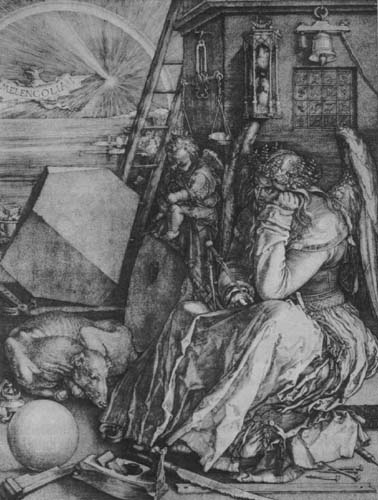
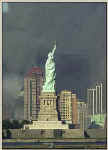
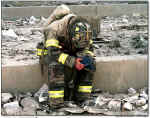
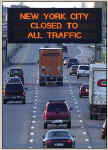
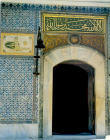
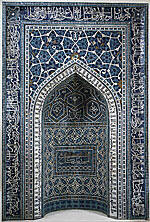

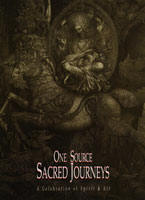
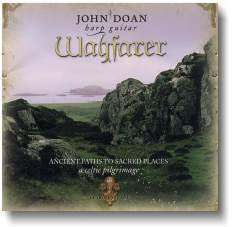 Superior,
an ecological history. The Way of A Religious Liberal. Course of
Empire: a magical America. A Pilgrim’s Diary. Drawing. Gardening.
Tours at the Art Institute. Left wing politics in Anoka County. Yes.
Yes. Yes. Yes.
Superior,
an ecological history. The Way of A Religious Liberal. Course of
Empire: a magical America. A Pilgrim’s Diary. Drawing. Gardening.
Tours at the Art Institute. Left wing politics in Anoka County. Yes.
Yes. Yes. Yes. 